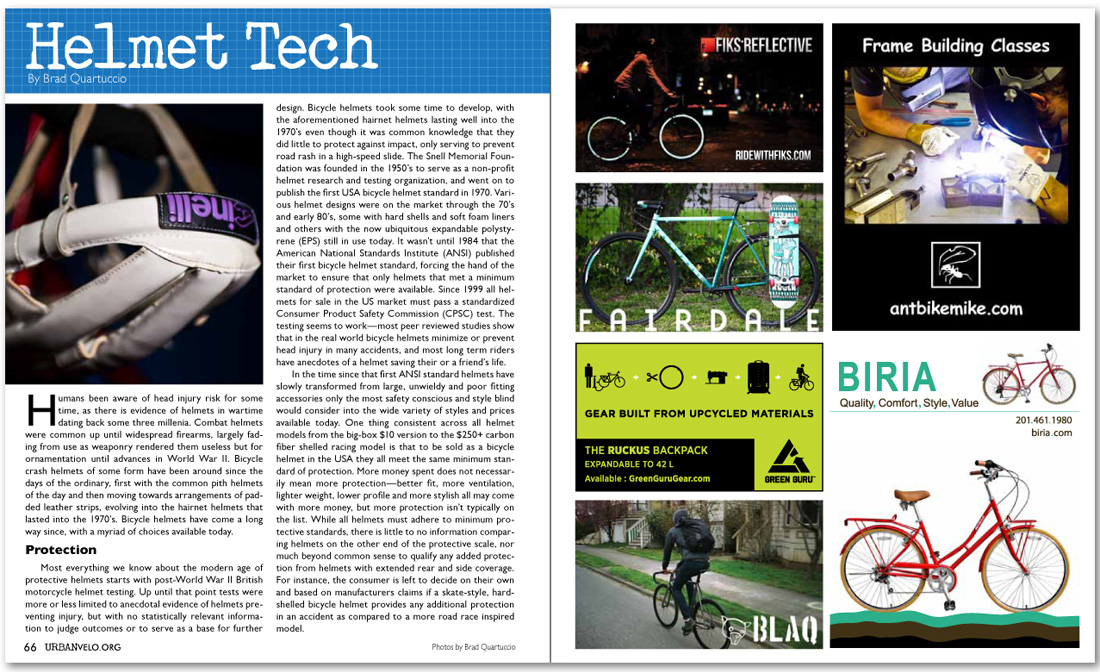


Humans been aware of head injury risk for some time, as there is evidence of helmets in wartime dating back some three millenia. Combat helmets were common up until widespread firearms, largely fading from use as weaponry rendered them useless but for ornamentation until advances in World War II. Bicycle crash helmets of some form have been around since the days of the ordinary, first with the common pith helmets of the day and then moving towards arrangements of padded leather strips, evolving into the hairnet helmets that lasted into the 1970’s. Bicycle helmets have come a long way since, with a myriad of choices available today.
Protection
Most everything we know about the modern age of protective helmets starts with post-World War II British motorcycle helmet testing. Up until that point tests were more or less limited to anecdotal evidence of helmets preventing injury, but with no statistically relevant information to judge outcomes or to serve as a base for further design. Bicycle helmets took some time to develop, with the aforementioned hairnet helmets lasting well into the 1970’s even though it was common knowledge that they did little to protect against impact, only serving to prevent road rash in a high-speed slide. The Snell Memorial Foundation was founded in the 1950’s to serve as a non-profit helmet research and testing organization, and went on to publish the first USA bicycle helmet standard in 1970. Various helmet designs were on the market through the 70’s and early 80’s, some with hard shells and soft foam liners and others with the now ubiquitous expandable polystyrene (EPS) still in use today. It wasn’t until 1984 that the American National Standards Institute (ANSI) published their first bicycle helmet standard, forcing the hand of the market to ensure that only helmets that met a minimum standard of protection were available. Since 1999 all helmets for sale in the US market must pass a standardized Consumer Product Safety Commission (CPSC) test. The testing seems to work—most peer reviewed studies show that in the real world bicycle helmets minimize or prevent head injury in many accidents, and most long term riders have anecdotes of a helmet saving their or a friend’s life.
In the time since that first ANSI standard helmets have slowly transformed from large, unwieldy and poor fitting accessories only the most safety conscious and style blind would consider into the wide variety of styles and prices available today. One thing consistent across all helmet models from the big-box $10 version to the $250+ carbon fiber shelled racing model is that to be sold as a bicycle helmet in the USA they all meet the same minimum standard of protection. More money spent does not necessarily mean more protection—better fit, more ventilation, lighter weight, lower profile and more stylish all may come with more money, but more protection isn’t typically on the list. While all helmets must adhere to minimum protective standards, there is little to no information comparing helmets on the other end of the protective scale, nor much beyond common sense to qualify any added protection from helmets with extended rear and side coverage. For instance, the consumer is left to decide on their own and based on manufacturers claims if a skate-style, hard-shelled bicycle helmet provides any additional protection in an accident as compared to a more road race inspired model.